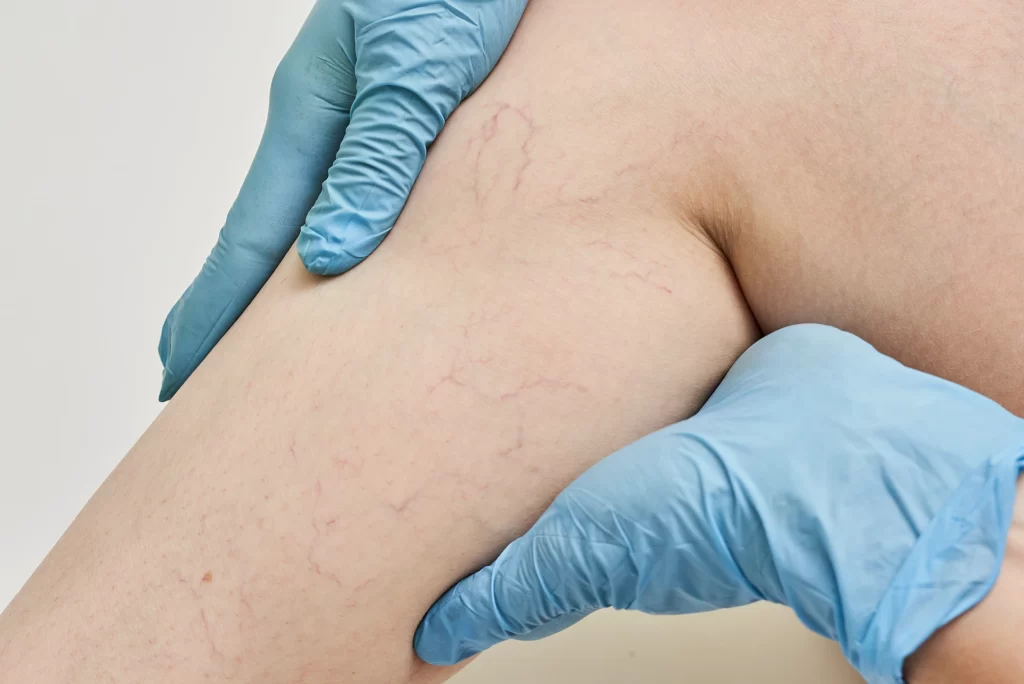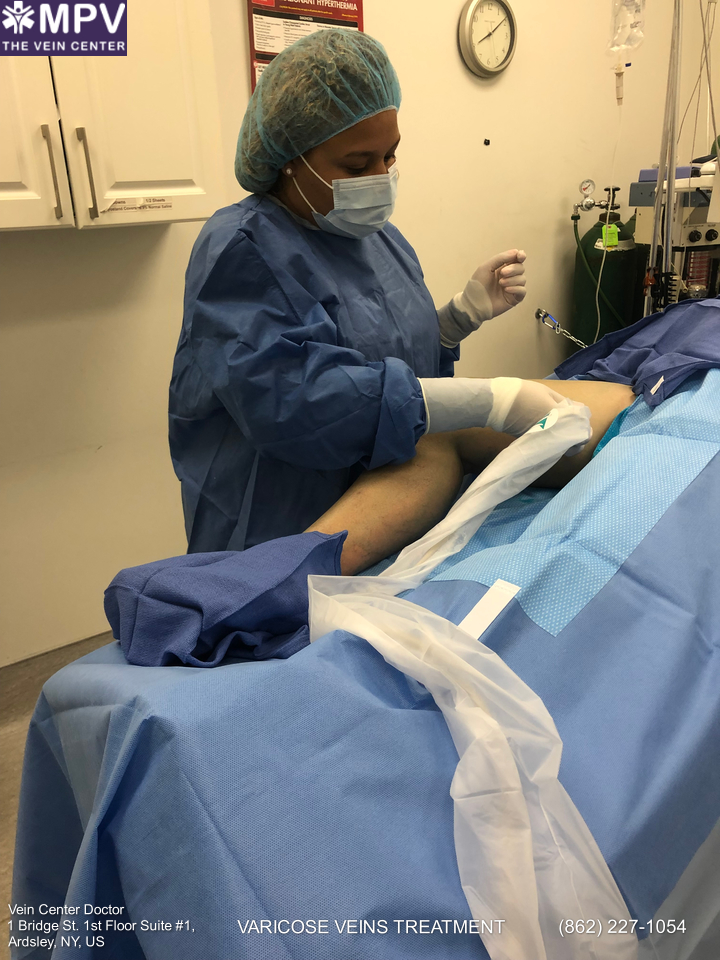Varicose veins are a common venous disease that mostly affects adults. This disorder usually appears in the legs and feet, causing swelling and pain that can be worsened by prolonged standing or walking. When you have varicose veins or spider veins, it’s important to get proper treatment since they won’t easily go away on their own and may progress to serious debilitating conditions.
So what can happen if varicose veins are left untreated? Severe varicose veins or spider veins may lead to increased leg pain and swelling that can interfere with your daily activities. They may also lead to health problems such as venous ulcer, blood clots, spontaneous bleeding, deep vein thrombosis, and lipodermatosclerosis.
Living with unwanted veins is a thing of the past, when you can simply schedule a free consultation with Vein Center Doctor and find your ideal solution today.
If you have a job that entails you to spend extensive hours of standing, walking, or sitting, you may notice bulging, discolored veins appearing around your legs, feet, and calves. Those are called varicose veins and they develop due to poor blood flow in your lower leg.
Normally, blood should be able to pass smoothly from your lower body and return to the heart. Healthy leg veins have one-way valves that pump the blood and transport them to the heart. However, in cases of people with varicose veins, their valves are weakened or damaged which prevents the flow of blood to the heart and causes them to accumulate inside the veins.
Some early varicose vein symptoms include muscle cramping, swelling, pain, and a heavy or achy feeling that persists whenever you move your legs. Discolored patches of skin and appearance of visible veins or light red spots on the legs can also indicate chronic venous insufficiency.
As with any health condition, it’s important not to overlook the common telltale signs of varicose veins and spider veins. Although it’s mostly viewed as a cosmetic concern, untreated varicose veins may have potential complications. Here are some of the unwanted consequences when you don’t take care of varicose veins:
Ulcers are sores that can form on your legs, especially near your ankles, as a possible complication of untreated varicose veins. They’re a result of blood pooling inside the veins, causing the walls of the blood vessel to stretch. They usually appear as a painful open wound that have irregular borders and sometimes have fluid coming out of them.
Venous ulcers won’t disappear on their own. Additionally, the longer that you leave them untreated, the greater the risk you have for having permanent tissue damage. That’s why if you want to avoid this serious venous problem, you should always keep an eye out for changes in your enlarged vein.
Another possible complication of untreated varicose veins or spider veins are blood clots. When you have poor blood circulation in your legs, your platelets may stick together and form clots inside your veins. This can cause uncomfortable symptoms such as leg pain, swelling, redness, and a burning sensation in your lower body.
This is a type of clotting disorder that occurs when a blood clot forms within a deep vein in the body. A study suggests that adults with varicose veins are significantly at risk for developing deep vein thrombosis. This health risk increases with age and can lead to symptoms of throbbing pain, swelling, warm skin, or bulging veins in the leg.
You’re also at risk for developing skin infections if you have severe varicose veins. When there’s leg swelling or inflammation from varicose veins, there’s an increased possibility of different kinds of bacteria entering the deeper layers of the skin due to the tissues getting stretched.
This can lead to cellulitis which has symptoms of redness, tenderness, warmth, and pain around the affected area. Some patients may also notice blisters forming on their leg and may sometimes experience fevers and chills.
A superficial vein near the surface of your skin may also spontaneously bleed if it gets cut or your leg becomes wounded. Large varicose veins are also at risk for hemorrhage if the vein wall becomes too stretched out and ruptures, leading to blood leaking out of the skin.
Poor blood circulation in the leg vein can also cause inflammation of the subcutaneous fat layer and lead to a condition called lipodermatosclerosis. This usually affects the lower extremities and causes symptoms like skin discoloration, redness, severe pain, tenderness, and swelling. Some cases of lipodermatosclerosis may lead to leg ulceration and infection.
It’s natural to be bothered when you see large, bulging varicose veins on the back, front, or sides of your legs. While it’s already a cosmetic concern, the good news is that this vein problem isn’t particularly life-threatening.
When treated early and effectively, your varicose veins will get better and you can be free from its potential health complications. However, if you leave your varicose veins or spider veins on their own or rely too much on natural remedies, there’s a possibility that it may progress to a more serious vein disorder.
One of the possible conditions that may happen from severe varicose veins is pulmonary embolism. It happens when a clot travels from the leg vein to the lungs and blocks an artery that can interfere with blood circulation.
This is a possible life-threatening disorder so it’s important to get immediate medical treatment if you experience any of its symptoms. Some of the signs of a pulmonary embolism that you need to watch out for are:

It’s never easy to live with varicose veins or spider veins. Aside from its unsightly appearance, its symptoms can be debilitating and affect your quality of life. Fortunately, there are non-invasive medical procedures that can help improve the appearance of varicose veins. Here are some of the best varicose vein treatments:
This varicose vein treatment involves a foam or saline solution that is injected directly into the diseased vein. The injected solution will cause the vein or blood vessel to scar, blocking the flow of blood and rerouting them to healthy veins. The treated veins will eventually collapse and fade within a few weeks.
A vein specialist can also perform endovenous laser ablation therapy to eliminate varicose veins. With this procedure, they will insert a catheter into the affected vein and place a laser fiber that will send heat to close the varicose veins. This will cause the treated veins to shrink until they’re no longer visible on your skin.
Another effective treatment option for varicose veins is radiofrequency ablation. This uses a form of electric energy to heat the damaged vein and seal them off to improve your skin appearance. During this procedure, the doctor will use ultrasound so they can treat the right veins and deliver the heat safely.
There are many factors that can lead to varicose veins, which is why the first step to minimizing your risk for vein disease is taking care of your vein health. Here are some of the best practices to prevent the occurrence of varicose veins and spider veins:

In most cases, varicose veins are harmless and rarely pose a serious health risk. However, if poor blood circulation is left untreated for a long period of time, it may take a toll on your vein health and cause persistent pain, swelling, and possibly, bleeding, infections, or blood clots.
Don’t let your varicose veins significantly change your quality of life. At Vein Center Doctor, we offer state-of-the-art procedures that can safely and effectively eliminate your varicose veins and spider veins. We have a team of experts led by Dr. Rahul Sood who can address your various painful symptoms. Contact our vein clinic today to schedule your consultation or inquire about our various treatments.
Find exactly what you need to get rid of your vein-related problems. Dr. Sood and the rest of our team at Vein Center Doctor are ready to help: schedule your free consultation today.
Most Insurance is accepted for treatment